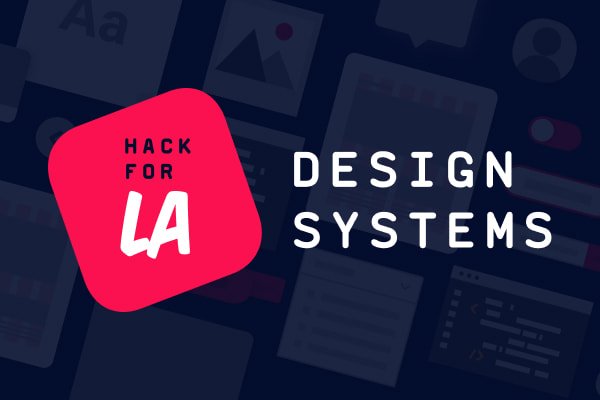Design Systems initiative
Ambiguous problem space
Hack for LA is a non-profit organization that brings together civic-minded volunteers who harness creativity to solve societal problems through tech products in the Los Angeles region.
HfLA is a volunteer-based organization with high turnover. Thus, creating consistent documentation and standards for design deliverables is critical. The Design System team’s goal was to understand user needs and create pathways for building and maintaining a Design System for use across the organization.
My approach was to develop a high-level research roadmap rooted in user insights and flexible enough to evolve as additional insights came to light.
Recommendation
The Hack for LA ecosystem is too vast and diverse to build a single, rigid design system. HfLA’s internal users are volunteer workers with relatively short tenures. Thus, a design system must be coherent, consistent, and simple, while also being flexible and adaptive to the needs of different projects.
It must be iterative.
My role
I served as Lead UX Researcher. The role entailed creating and implementing a strategic research roadmap and then working to align research activities to the aims of the project.
Iterative research design
The research vision is constantly informed by data and insights.
Every piece of data gathered and every insight illuminated should connect to and shape this vision.
STAGE 1
What are current design and development practices?
Insights
Knowledge sharing processes are not coherent across the organization, which makes it vulnerable to knowledge loss.
The intentions of volunteers are not well understood.
STAGE 2
How can a design system benefit varying projects?
HfLA’s Figma Kit
Iterative design
“We can do design sprints and test products while enriching our larger vision. ”
Lessons learned.
initial research roadmap is a working framework.
establish clear pathways to connect insights from tactical research into the research roadmap and vision.
use iterative design as a tool to drive and frame research.






